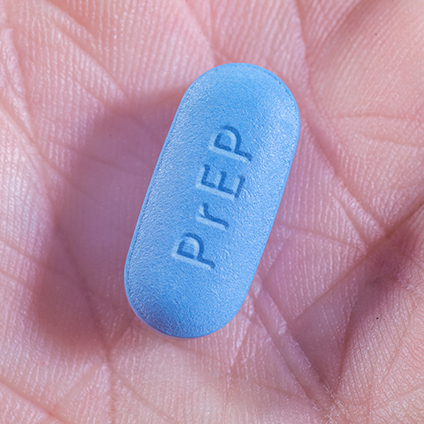Get Help Now
Pre-Exposure Prophylaxis or "PrEP" is HIV medicine taken to lower the chances of getting an HIV infection. PrEP is used by people who do not have HIV but are at high risk of HIV exposure through sex or injection drug use. When taken as prescribed, PrEP can help you stay protected against HIV if a condom breaks, is not used correctly, or is not used every time. At FPA, we prescribe Truvada which must be taken consistently each day. PrEP does not protect you against other sexually transmitted infections and is recommended to be used with condoms. Consistent use of PrEP reduces your risk of getting HIV from sex by nearly 99% and from injection drug use by at least 74%. You will need to complete baseline HIV testing (along with several other labs) before starting treatment. You will also need to follow-up with FPA for repeat HIV testing every 3 months while taking PrEP.
What is PrEP?
PrEP (pre-exposure prophylaxis) is FDA-approved to reduce the chances of developing HIV from sex or injection drug use in HIV-negative patients. PrEP should be used together with safe-sex practices to reduce the high risk of of contracting HIV.
Who should NOT take Prep?
To make sure PrEP is right for you, tell your clinician if you have:
- Liver disease
- Impaired kidney function
- Hepatitis C
- If you're pregnant or breastfeeding
- If you've tested positive for HIV
What are the side effects of PrEP?
Common side effects are:
- Headache
- Nausea and stomach pain
- Weight loss
Less common but more severe side effects include:
- Lactic acidosis
- Sudden or unusual bone pain
- Kidney or Liver problems
PrEP alone will not protect you from HIV infection. It's important to use safe-sex practices and get HIV testing regularly.
What is PEP?
Post-Exposure Prophylaxis or “PEP” involves taking medications after a possible exposure to HIV to prevent HIV infection. PEP should only be used in emergency situations and is not meant for regular use by people who may be exposed to HIV frequently. PEP must be started within 72 hours after a possible exposure to HIV, and the sooner PEP is started the better. PEP is not a substitute for the use of other HIV prevention methods such as Pre-Exposure Prophylaxis or “PrEP.”
If you are prescribed PEP, you will take HIV medicines every day for 28 days. At FPA, your healthcare provider will prescribe both Truvada and Tivicay to take together, along with ordering HIV testing and other lab studies. In some people, PEP may cause side effects, such as nausea, diarrhea, headache, dizziness, depression, and insomnia. These side effects are not serious and generally go away over time. Overall, PEP is effective in preventing HIV when it is taken correctly after an exposure.
What is the difference between PrEP and PEP?
Prophylaxis means “treatment or actions taken to prevent a disease.” PrEP is a treatment plan to prevent HIV before a person is exposed while PEP is a treatment plan for after a person is exposed.
PEP is given to people who think they may have been exposed to HIV through sexual contact, shared needles or someone who has been sexually assaulted. Also, if a healthcare worker is accidentally pricked by a used needle during work, they may be given PEP as a precautionary measure.

Telehealth Services Available!
Many services available from the comfort of your home. Tap/Click for more!
